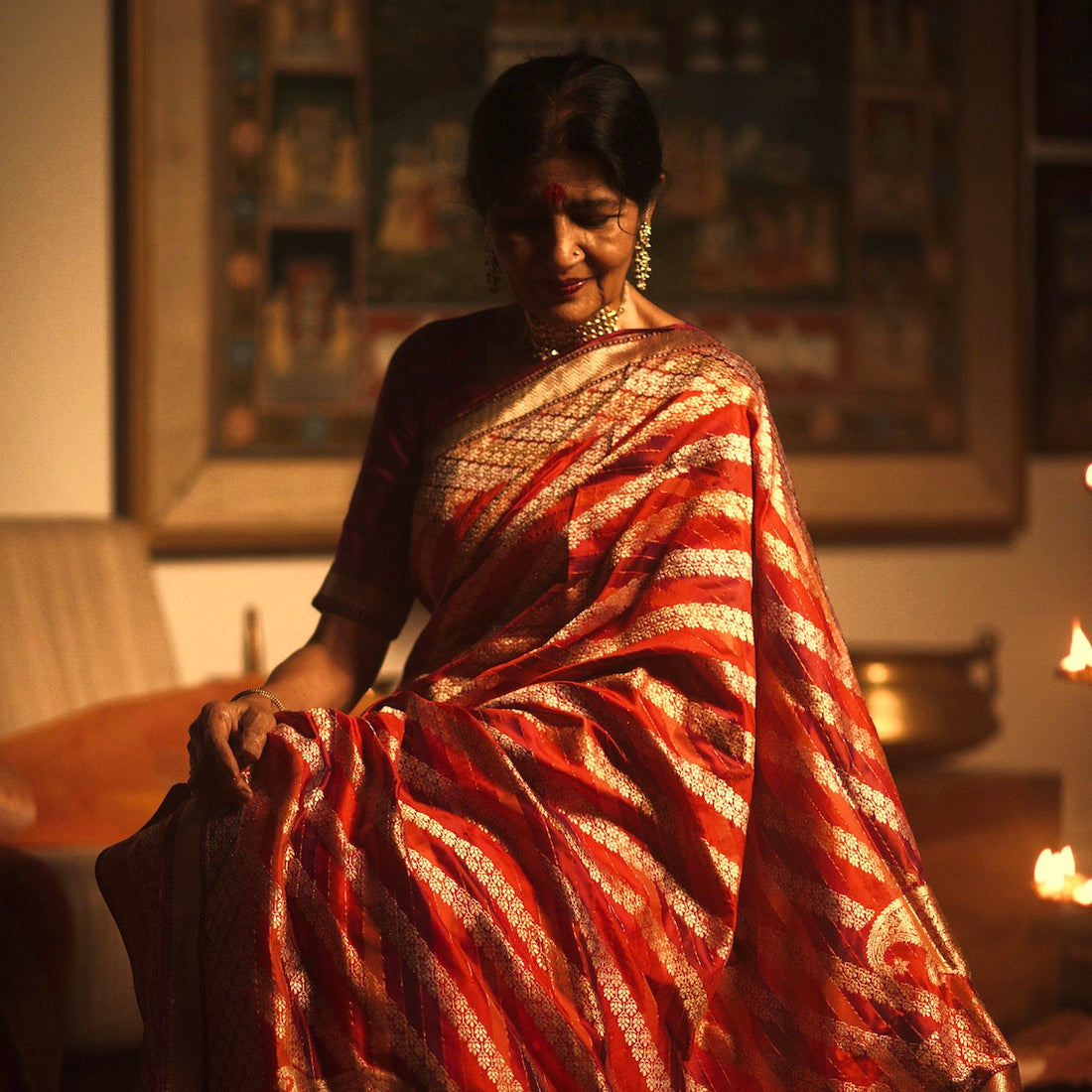
India Week with Brinda Gill - A Precious Revival: Banaras Brocades Woven with Naturally Dyed Yarns
“Growing up in Lucknow and Allahabad, I saw the most beautiful textiles hand-woven in Banaras. However, the Banaras sarees I came across later felt more showy than subtle and sophisticated. My love for handlooms, particularly the exquisite traditional Banaras brocades, drew me to their revival,” says Chandra Jain, a pioneering textile revivalist based in Bangalore.
Chandra connected with master weavers in Banaras, a city on the banks of the sacred River Ganga. Renowned for its centuries-old weaving traditions, Banaras is famed for textiles crafted with silk yarns and intricate extra-weft motifs in silk and metallic threads. Sharing brocades from her personal collection, Chandra asked the weavers if they could recreate similar sarees. Their response was encouraging: they assured her they had the skills but explained that weaving such intricate designs required more time and effort, resulting in higher costs. They doubted there was a market for these sarees. Undeterred, Chandra took it upon herself to raise awareness and create demand for these exquisite textiles, ensuring that such extraordinary craftsmanship would not be lost.

In addition to reviving the weaving techniques, Chandra was determined to reintroduce the use of natural-dyed yarns. Natural dyes, once integral to Banaras weaving until the late 19th century, had been replaced by synthetic dyes. She believed the revival of natural dyeing would bring back the beauty, environmental harmony, and gentleness on the skin associated with these traditional colours.
To achieve this, Chandra organised a workshop on natural dyeing led by Jagada Rajappa, an internationally renowned natural dye expert. The weavers were introduced to the process of creating dyes from plants, bark, leaves, roots, seeds, and flowers. They were captivated by the vibrancy and unique attributes of these dyes. Motivated by Chandra’s vision, the artisans began weaving sarees with natural-dyed yarns, leading to the creation of a distinctive collection.
In 2006, Chandra founded KIMKHAB, a textile design studio in Bangalore. The name “Kimkhab,” meaning "woven dreams," reflects the studio’s mission to craft dreamlike weaves through collaboration with Banaras artisans. The textiles recreate the timeless beauty of vintage Banarasi brocades, enriched with elegant motifs and patterns woven with naturally dyed silk, cotton, and fine metallic threads. Designed for special occasions, some sarees feature light, summery colours and patterns, while others in deeper, richer hues are ideal for cooler seasons.

Drawing inspiration from poetry, art, and festivals, Chandra has curated stunning collections over the years. In April 2024, she launched the Ritu Samhar summer collection at ARTISANS’ in Mumbai, a gallery celebrated for showcasing exclusive textile and art collections. Inspired by Ritu-Samhara, an evocative poem about India’s seasons by the legendary poet Kalidasa (4th–5th century A.D.), the collection embodied the essence of seasonal beauty. Later in October 2024, she unveiled the DeepMallika collection for Diwali, the Festival of Lights, at the same venue. These sarees, woven with naturally dyed yarns in jewel-like colours, radiated joy and festivity, perfectly complementing the Diwali spirit.
For Chandra, the revival journey has been deeply fulfilling. She hopes that, like the eternal River Ganga, which has flowed through Banaras since time immemorial, the cherished tradition of hand-weaving fine brocades will continue to thrive in Banaras for generations to come.
Images: Mrinal Jain and Jayasimha Reddy
Email: Chandra.jain11@gmail.com
The KIMKHAB sarees can be viewed at ARTISANS’ gallery in Kala Ghoda, Mumbai, India (@artisanscentre).

